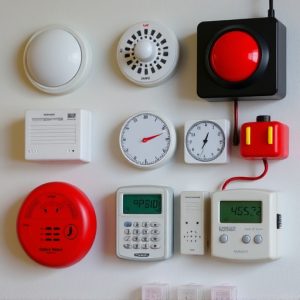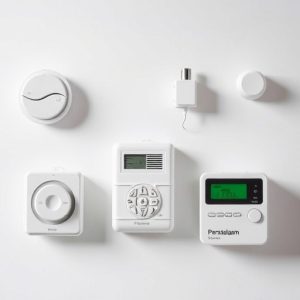Personal Safety Alarms: Protecting Lone Workers, Especially Joggers
In today's world, independent jogging routines come with risks like accidents and potential ass…….
In today's world, independent jogging routines come with risks like accidents and potential assailants. Personal Safety Alarms for Joggers mitigate these dangers by enabling quick alerts to emergency services or loved ones in distress, ensuring swift response times. These alarms have evolved with features like personal GPS tracking, loud sirens, automatic fall detection, and smartphone connectivity, enhancing joggers' well-being. Regular training, proactive safety measures, and integrating alarms into broader strategies are crucial for optimal personal safety. Advancements include compact designs, extended battery life, AI anticipation of hazards, and smart home integration, aiming towards lightweight, discreet yet robust solutions tailored to joggers' unique needs.
In today’s fast-paced world, many workers operate alone, posing unique safety challenges. This is especially true for joggers navigating remote routes or isolated areas. To mitigate risks, understanding the inherent dangers of lone work and investing in effective personal safety alarm systems are paramount. This article explores various types of alarms designed for joggers, provides practical implementation tips, delves into regulatory standards, and discusses emerging trends shaping the future of personal safety alarms for joggers.
- Understanding the Risks of Lone Work and Jogging
- Types of Personal Safety Alarms for Joggers
- Implementing and Using Safety Alarm Systems Effectively
- Regulatory Requirements and Future Trends in Personal Safety Alarms
Understanding the Risks of Lone Work and Jogging
In today’s fast-paced world, many individuals embrace independent routines, such as jogging alone in their local parks or trails. While this promotes personal well-being and mental health, it also presents unique risks that cannot be overlooked. Jogging alone exposes one to potential dangers like unexpected accidents, injuries, or even more severe threats from unknown assailants. Understanding these risks is the first step towards implementing effective safety measures.
Personal Safety Alarms for Joggers are designed to bridge this gap in security. These innovative devices empower individuals to protect themselves while enjoying their solo runs. With a simple press of a button, joggers can alert emergency services or loved ones about their location and distress, ensuring swift response times should any unforeseen circumstances arise.
Types of Personal Safety Alarms for Joggers
Personal Safety Alarms for Joggers have become an essential tool in ensuring their well-being during early morning or late-night runs. These alarms are designed to be compact, lightweight, and easily portable, allowing joggers to carry them hands-free while they exercise. One popular option is the personal GPS tracker alarm, which combines location tracking with a loud siren to deter potential attackers and alert emergency services in case of distress.
Another type is the smartphone-connected alarm, where a dedicated app allows users to send out automatic alerts to pre-selected contacts when they press a panic button. Some models even incorporate features like automatic fall detection, which can instantly notify emergency services if the wearer experiences a sudden or unexpected fall. These advanced alarms provide added peace of mind for joggers, empowering them to focus on their health and safety during their runs.
Implementing and Using Safety Alarm Systems Effectively
Implementing and using safety alarm systems effectively is paramount for lone workers, particularly joggers, who often find themselves in remote or isolated areas. Personal Safety Alarms for Joggers should be easy to activate, loud enough to attract attention, and equipped with features like GPS tracking for rapid response in case of emergencies. Regular training on how and when to use these devices is crucial; joggers must understand the importance of not relying solely on their alarm as a deterrent but also taking proactive measures to enhance their personal safety.
To maximize effectiveness, alarms should be integrated into a broader safety strategy that includes well-traveled routes, regular communication with companions or family members, and the use of high-visibility apparel. Additionally, continuous connectivity through mobile networks or satellite technology ensures that help can be summoned promptly. By combining these elements, lone workers, especially joggers, can significantly improve their personal safety while enjoying outdoor activities.
Regulatory Requirements and Future Trends in Personal Safety Alarms
In recent years, there’s been a growing emphasis on Personal Safety Alarms for lone workers, driven by both regulatory requirements and a heightened awareness of personal safety. Many countries have implemented strict guidelines mandating that employers provide suitable safety measures for employees working alone, particularly in high-risk industries or during evening shifts when danger may be more prevalent. For joggers and other recreational users, these regulations have led to advancements in Personal Safety Alarms designed to be compact, user-friendly, and highly effective. Devices now often include GPS tracking, automatic fall detection, and long-lasting batteries, ensuring joggers can stay connected and protected during their runs.
Looking ahead, the future of Personal Safety Alarms for Joggers appears poised for further innovation. Emerging technologies like artificial intelligence (AI) and machine learning could enhance alert systems by enabling them to anticipate potential hazards based on user behavior patterns. Additionally, integration with smart home devices and mobile apps may provide real-time alerts to contacts or emergency services in case of distress. As technology continues to evolve, the focus will remain on creating lightweight, discreet, yet powerful safety solutions tailored to the unique needs of joggers and other lone workers.
Lone workers, especially joggers, face unique risks that require effective safety measures. Implementing personal safety alarm systems is a proactive step towards ensuring their well-being. With various types of alarms available, understanding the features and choosing the right one is essential. Effective use involves staying alert and reacting promptly to alerts. As regulations evolve, staying informed about industry standards and future trends in personal safety alarms for joggers will help maintain a safer outdoor experience.


